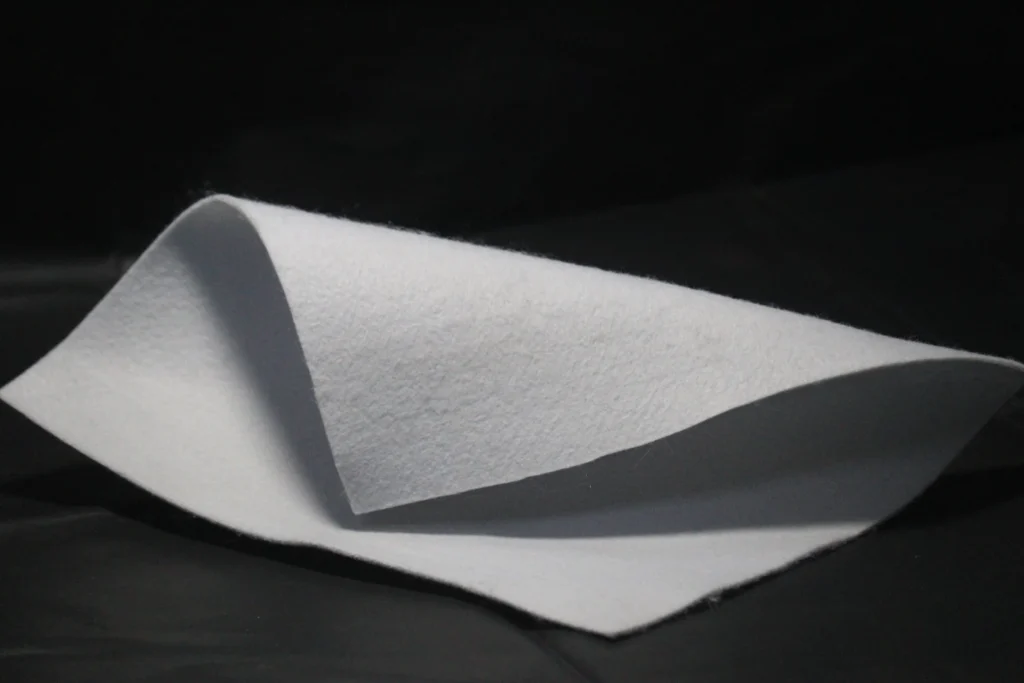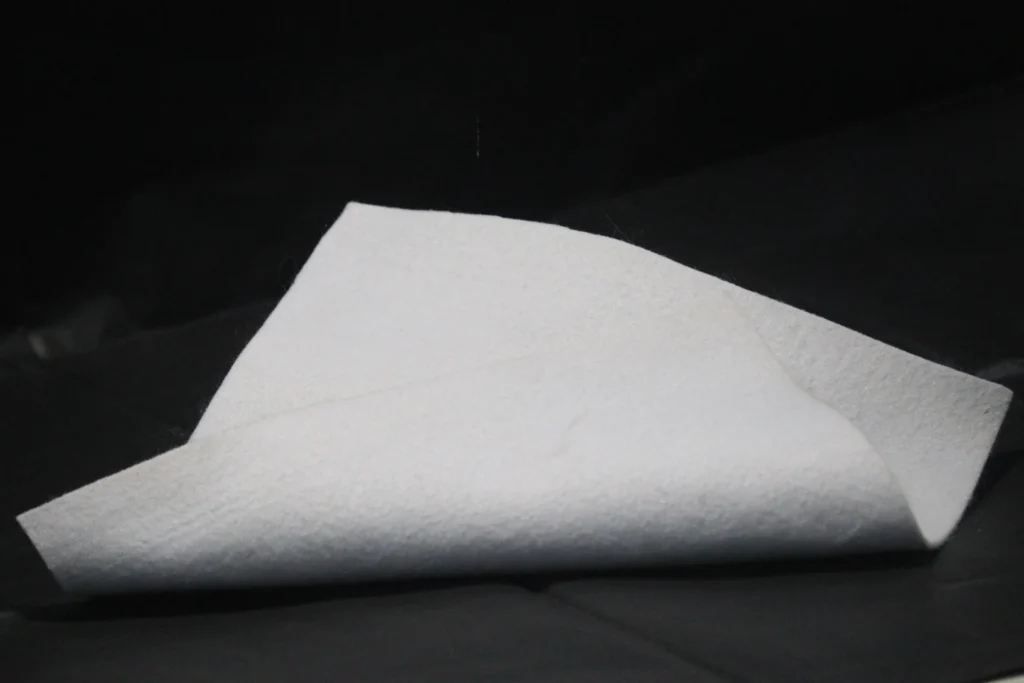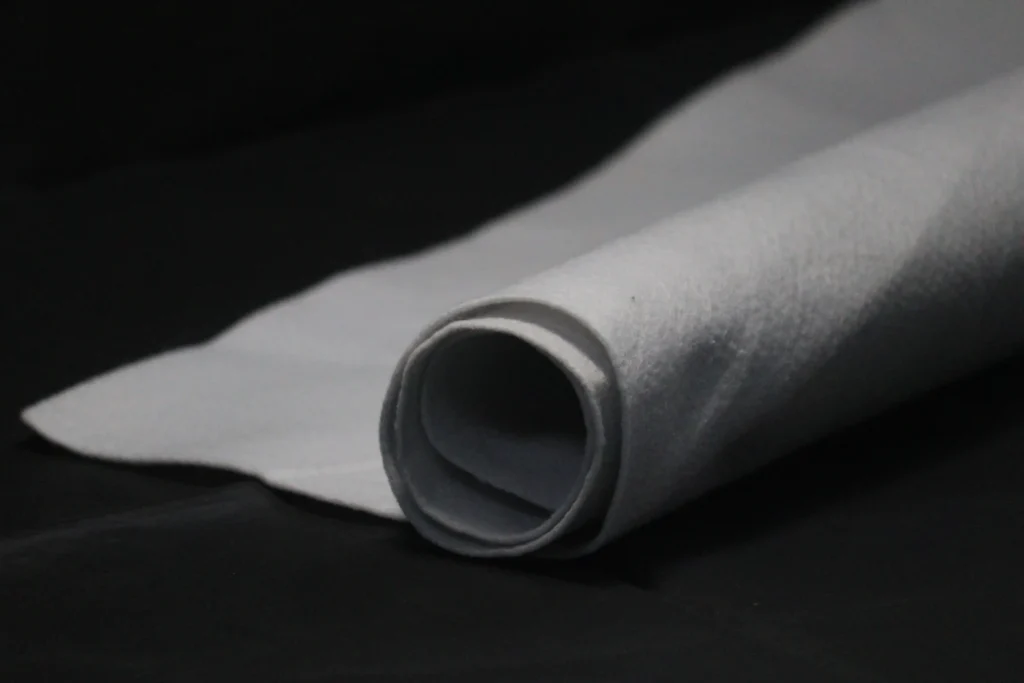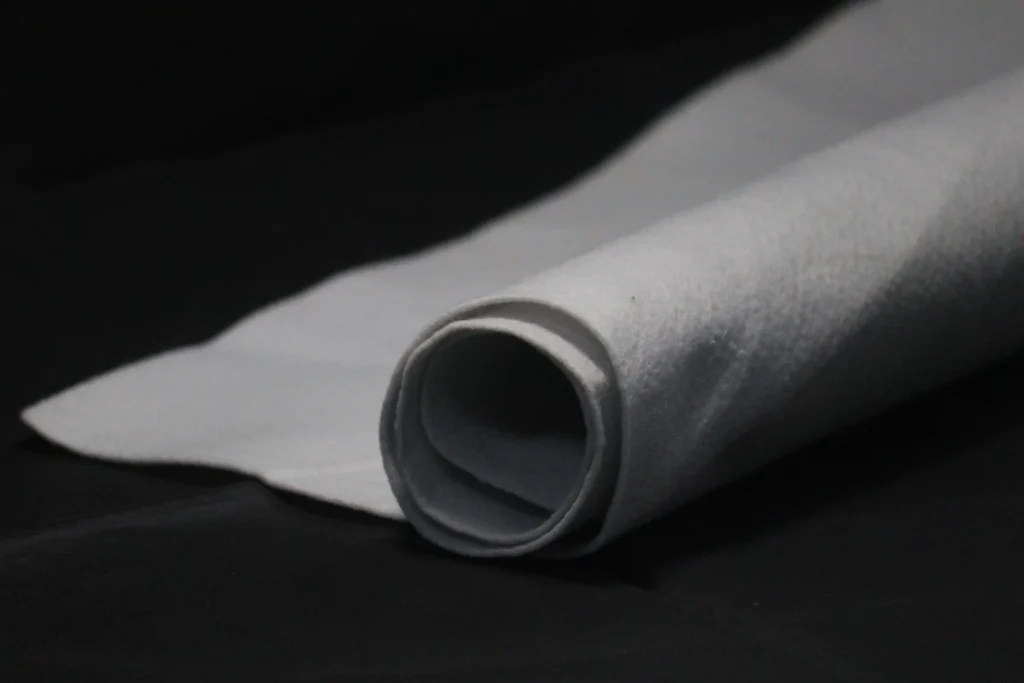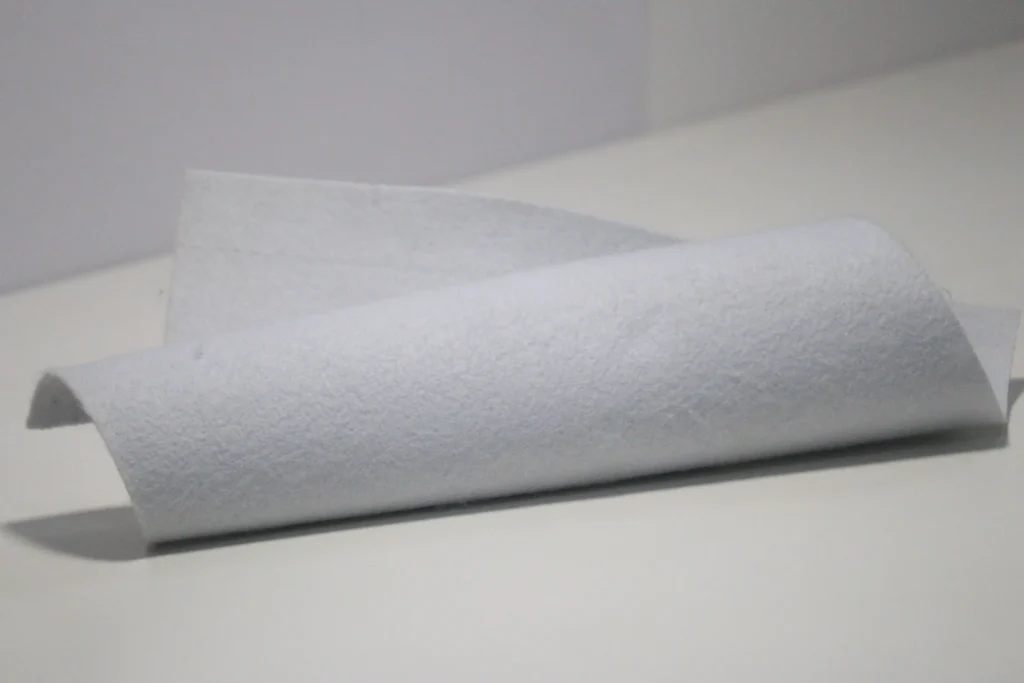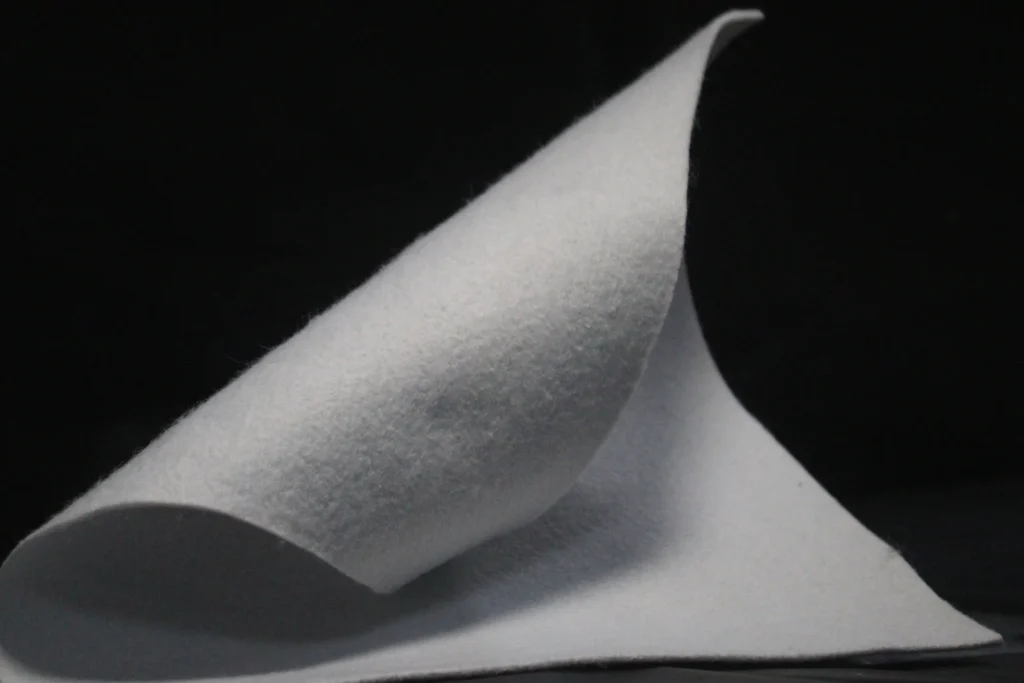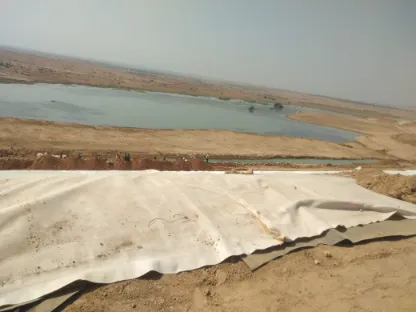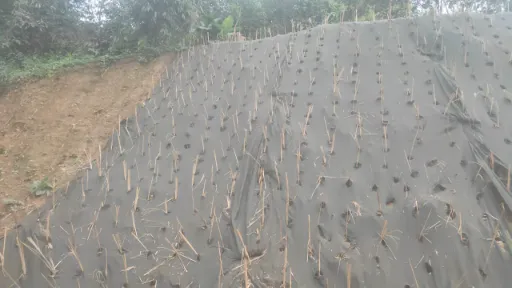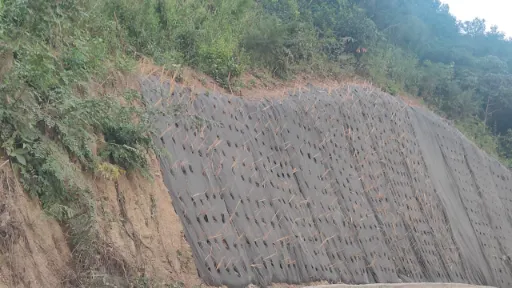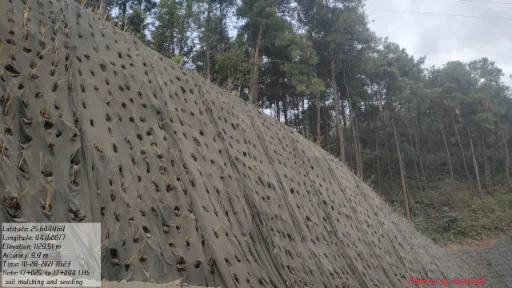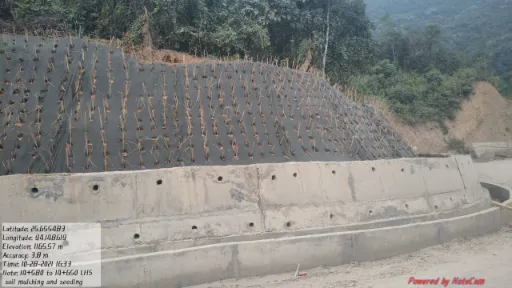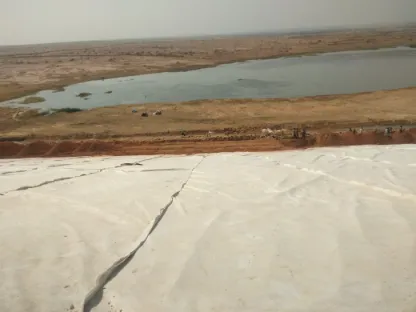Geotextiles
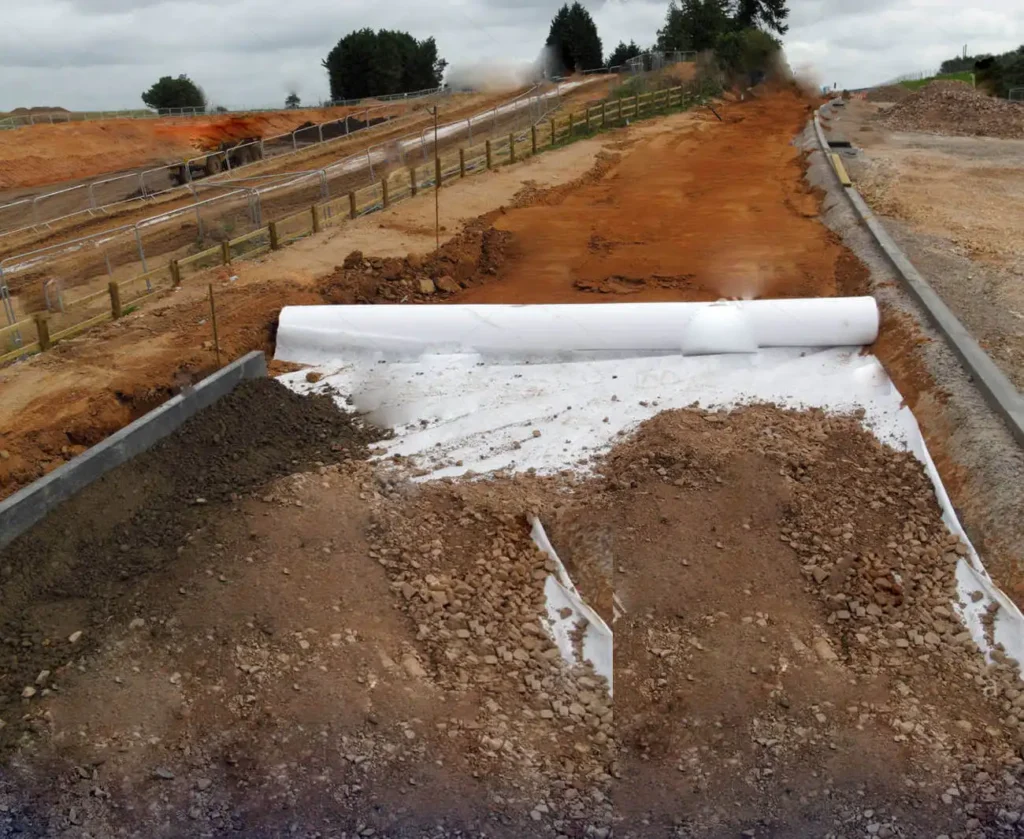
What is Geotextile & Why we Are the Best Geotextile Manufacturers
Ocean Global – the leading geotextile manufacturer in India offers a healthy and durable Geotextile range that is stitch-less and comes in a variety of colors and lengths to meet the needs of our customers. These are typically installed along river embankments, sides, canal banks, and hill slopes to control landslides and soil erosion. This collection of woven open mesh fabrics is made entirely of natural and biodegradable coir. During the formation of vegetative cover, these natural nettings keep the soil and seed intact. It adds organic nutrients to the soil as it degrades. Coir Geotextiles are “environmentally friendly” materials.
Ocean Global’s Non-Woven geotextile product line is quality certified to the highest manufacturing standards in ISO-accredited quality factories for both domestic and international markets. The product is covered in a UV-resistant outer wrap that allows it to be left outside for later usage if the wrapper is not removed prior to deployment and use. For various engineering applications, Ocean Global provides the polyester continuous filament nonwoven geotextile in a variety of weights, strengths, and filtering characteristics. Additionally, these grades are available in a variety of roll widths and lengths to meet your needs.
History of Geotextile
Geotextiles have a long history of use in civil, coastal, and environmental engineering constructions for filtration, drainage, separation, and protection. Geotextiles are a relatively low-cost product that, when designed and implemented properly, can replace typical granular treatments at a significant cost reduction, both in aggregate quantities utilized and in labor costs to install such aggregate systems.
Non-woven geotextiles are polymer-based products produced using a number of methods. The most appropriate type of geotextile for the designer or contractor is usually determined by the engineering use for the product.
Geotextiles are classified in a wide range of ways depending on the manufacturing procedures used. Geotextiles made from continuous filament or staple fiber are available at Ocean Global.
Table of Contents
Description of Geotextiles
Geotextile fabrics are technical textile fabrics used in construction, landscaping, and ecosystem management. They differ slightly in that they are porous fabrics.
Sectors
- Transportation
- Ports and marine
- Power
- Mines
- Heavy industries
- Ririver & flood protection
- Landscaping, etc.
Function
- Separation
- filtration
- drainage
- protection
- reinforcement
- stabilization
Ocean Geotextiles have superior performance, excellent uniformity, and high resistance to damage during installation. They have high tensile strength and are cost-effective, available in varying strength and thicknesses.
Product Array
Ocean Global geotextile fabrics include non-woven geotextiles and woven geotextiles. We are one of the best non-woven geotextile manufacturers in India.
Separation, filtration, drainage, protection, reinforcement, and stabilization.
Ocean Geotextiles have superior performance, excellent uniformity, and high resistance to damage during installation. They have high tensile strength and are cost-effective, available in varying strength and thicknesses.
Major Differences Between Woven and Non-woven Geotextiles
Geotextiles have a wide range of geotextile applications, however, the majority of them come under the broad categories of erosion control, soil stability, and drainage. There is, however, a distinction to be made between woven and non-woven geotextiles, with each having a distinct advantage depending on the task at hand. Here’s an overview of what each category entails, as well as the types of projects that each is most suited for.
Woven Geotextiles
Woven geotextiles is manufactured by weaving. Individual threads, such as monofilaments, fibrillated yarns, slit films, and other materials, are woven into one large, homogeneous piece on a loom. Woven geotextiles have a high load capacity as a result of this technique, making them suitable for geotextile applications such as road building. Because these geotextiles are made by weaving threads or films together, they aren’t extremely porous, making them unsuitable for tasks that require drainage. This similar property makes them perfect for some erosion control operations in which water must pass over a surface without sinking into the soil below.
Functions of Woven Geotextiles
Separation, reinforcement, filtration, and stabilization.
Sectors in which Woven Geotextiles are used
Transportation, water resources, irrigation and flood control, ports, and marine.
Salient Features of Woven Geotextiles
- Superior resistance
- Better permeability
- Rot-resistant
- Biological degradation resistant
- UV resistant Chemically inert
- High tensile strength, low elongation
- Can handle very high loads
Applications of Woven Geotextiles
- Road stabilization
- The embankment on soft ground
- Railroad support
- Rip Rap support
- Aggregate separation
- Erosion control
Non-Woven Geotextiles
Non-woven geotextiles are made by chemically or thermally gluing materials together, needle punching, or other processes, rather than weaving cloth on a loom. They’re made of synthetic materials and are frequently utilized in filter and separation applications. Non-woven geotextiles aren’t always the best choice for stabilization and reinforcement projects. They’re frequently used to keep inner and external penetrations out of geotextile membrane lining systems. Non-woven geotextiles will degrade more quickly than woven geotextiles. Non-woven geotextiles, on the other hand, are likely to be the best choice for projects where pooling water is a big concern.
Function of Non Woven Geotextiles
Filtration, drainage, separation, and erosion control.
Sectors in which Non-Woven Geotextiles are used
They are robust and durable and suitable for industries of transportation, rail formation, ports and marine, water resources and embankments, liner protection, residential plumbing and real estate, and waste management.
Salient Features of Non-Woven Geotextiles
- Most versatile
- High tensile strength and elongation
- Comparatively more resistant to puncture
- Excellent filtration Mechanically robust
- Higher resistance to installation damage
Applications of Non Woven Geotextiles
- Asphalt overlay
- Erosion control
- Environmental engineering products
- Sediment dewatering bags
- Coastal protection
- Subsurface drainage
- Landscaping
- Landfills
What is non-woven geotextile fabric used for?
When both soil isolation and permeability are necessary, non-woven geotextiles are used. These materials are frequently used to wrap French drains or in conjunction with other sub-surface drainage systems. Non-wovens are also commonly employed beneath rock riprap revetment, where separation and drainage are both important.
Geotextile Fabrics
At Ocean Non Wovens, we specialize in manufacturing premium-quality geotextile fabrics designed to enhance soil stability and filtration across a wide range of applications. These fabrics are engineered with high tensile strength, making them an excellent choice for road construction, embankments, and drainage projects. Our geotextile fabrics are highly durable and adaptable, offering reliable performance in challenging conditions.
Whether you’re working on erosion control or reinforcement applications, geotextile fabrics from Ocean Non Wovens provide unmatched versatility and long-term cost savings. With a focus on quality and innovation, we ensure that our products meet the demands of modern geotechnical projects, delivering exceptional results you can trust.
Polyester Geotextile
Ocean Non Wovens offers superior polyester geotextiles that combine durability, chemical resistance, and excellent mechanical properties. These geotextiles are ideal for drainage systems, retaining walls, and high-load-bearing applications, ensuring consistent performance even under extreme environmental conditions. Manufactured with precision, our polyester geotextiles are built to last, reducing the need for frequent replacements.
When you choose Ocean Non Wovens’ polyester geotextiles, you’re investing in high-quality materials that provide optimal support for your infrastructure projects. Our geotextiles are tested for their reliability and offer a sustainable solution for soil reinforcement and erosion control, making them a preferred choice for engineers and project developers worldwide.
Monofilament Geotextile
At Ocean Non Wovens, our monofilament geotextiles are crafted using advanced single-filament technology, offering excellent filtration and separation capabilities. These geotextiles are designed for projects requiring superior permeability and clogging resistance, such as drainage systems, coastal protection, and landfill management. Their robust construction ensures dependable performance under diverse environmental conditions.
With Ocean Non Wovens’ monofilament geotextiles, you get a product that guarantees longevity and efficiency. These geotextiles effectively prevent soil erosion and maintain proper water flow, making them indispensable for projects that demand durable and high-performance solutions.
Drainage Geotextile
Ocean Non Wovens produces drainage geotextiles that excel in promoting water flow while preventing soil displacement. Designed for applications such as roadways, embankments, and sports fields, our drainage geotextiles improve the efficiency and lifespan of drainage systems. Their high permeability ensures optimal water management and prevents clogging, even in heavy-duty applications.
By choosing Ocean Non Wovens’ drainage geotextiles, you’re ensuring the success and sustainability of your projects. These geotextiles are easy to install, cost-effective, and built for long-term use, making them an essential choice for maintaining the integrity of infrastructure.
Needle Punched Geotextile
At Ocean Non Wovens, we manufacture high-performance needle-punched geotextiles that deliver superior strength, flexibility, and permeability. These geotextiles are ideal for demanding applications such as slope stabilization, filtration, and geomembrane protection. Their advanced design ensures consistent performance even in challenging geotechnical conditions.
Needle-punched geotextiles from Ocean Non Wovens offer exceptional reliability and durability, making them a cost-effective solution for long-term projects. Whether used in landfills or for soil reinforcement, our geotextiles are tailored to meet your project’s unique requirements.
Geosynthetic Fabric
Ocean Non Wovens is a trusted manufacturer of geosynthetic fabrics that provide innovative solutions for soil stabilization, separation, and erosion control. These fabrics are highly versatile and engineered to withstand extreme environmental conditions, ensuring their suitability for a wide range of applications.
Our geosynthetic fabrics are widely used in civil engineering and infrastructure development projects. With a focus on sustainability and quality, Ocean Non Wovens delivers products that enhance project efficiency, durability, and environmental safety.
Paving Fabric
Ocean Non Wovens offers durable paving fabrics designed to extend the life of asphalt pavements and reduce maintenance costs. These fabrics act as a barrier against water infiltration, improving the structural integrity of roads and minimizing cracking. Ideal for both road repair and new construction, paving fabrics are a must-have for sustainable infrastructure.
When you use Ocean Non Wovens’ paving fabrics, you’re investing in long-term durability and cost-efficiency. These fabrics not only enhance pavement performance but also contribute to environmentally friendly practices by reducing the need for frequent repairs and replacements.
Silt Fabric
At Ocean Non Wovens, our silt fabrics are specially crafted to control sediment and prevent soil erosion in sensitive environments. Perfect for construction sites, agricultural fields, and shoreline protection, these fabrics allow water to pass through while trapping fine particles, preserving the surrounding environment.
Our silt fabrics are a practical and effective solution for managing erosion and sedimentation challenges. Ocean Non Wovens provides reliable products that help safeguard ecosystems and maintain regulatory compliance, making them the ideal choice for environmentally conscious projects.
GroundCover Fabric
Ocean Non Wovens offers premium-quality groundcover fabrics for landscaping, agriculture, and horticulture. These fabrics provide excellent weed control while allowing air, water, and nutrients to reach the soil. With their durable and breathable design, groundcover fabrics are perfect for maintaining soil health and productivity.
Whether you’re managing a nursery, farm, or garden, Ocean Non Wovens’ groundcover fabrics deliver unmatched reliability and performance. Our products are designed to support sustainable practices, ensuring long-term success for your projects.
PP Geotextile
Ocean Non Wovens specializes in manufacturing PP (Polypropylene) geotextiles, known for their lightweight yet durable design. These geotextiles are resistant to chemicals and UV exposure, making them ideal for applications such as soil stabilization, drainage, and erosion control.
Our PP geotextiles are a testament to Ocean Non Wovens’ commitment to quality and innovation. Designed to meet the demands of modern geotechnical projects, they provide a cost-effective and sustainable solution for ensuring structural integrity and environmental safety.

